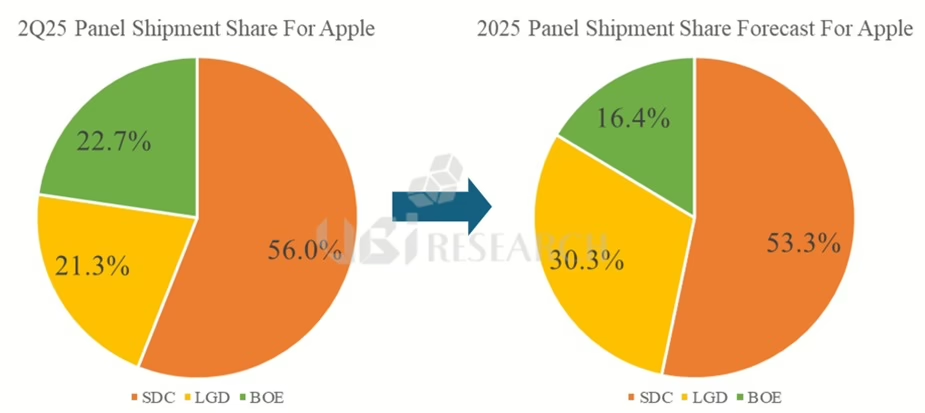LG Display is expected to see a significant rebound in its second-half performance as production of Apple’s iPhone 17 series and new iPad Pro models drives a substantial increase in OLED panel shipments, according to market research firm UBI Research.
The Korean display manufacturer’s OLED panel shipments are projected to surge approximately 70% in the third quarter as Apple’s latest devices entered full-scale mass production in July. iPhone panel shipments alone are forecast to reach 18.5 million units in Q3, up from previous quarter levels, with Q4 shipments expected to exceed 25 million units.
The recovery comes after LG Display’s market share in iPhone panel shipments fell to 21.3% in the second quarter, marking the first time it was overtaken by Chinese competitor BOE, which captured 22.7% of shipments. Samsung Display maintained its leading position with 56% of iPhone panel shipments during the period.
Despite the volume decline, LG Display maintains a revenue advantage through its focus on higher-priced LTPO panels used in iPhone Pro models, compared to the LTPS panels that BOE supplies for standard iPhone variants. The company serves as Apple’s exclusive supplier for small- and mid-sized OLED panels.
iPad OLED panel shipments are also expected to contribute to the recovery, with production doubling from 800,000 units in Q2 to 1.6 million units in Q3 as new iPad Pro models enter production following sluggish sales in the previous year due to high retail pricing.

“With both the iPhone 17 series and the new OLED iPad Pro models entering mass production in July, LG Display’s performance is set to show a clear recovery starting in the third quarter,” said Changwook Han, Executive Vice President of UBI Research. The firm projects LG Display will secure over 30% of total iPhone OLED panel shipments on an annual basis in 2025.
The production timeline aligns with Apple’s typical manufacturing cycle, where new iPhone series traditionally begin mass production each July ahead of fall product launches.

